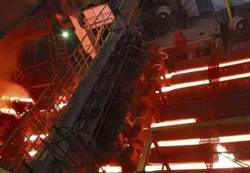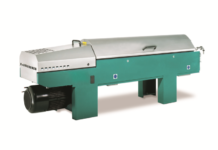New Delhi, Jan 01, 2015: The Indian steel is witnessing a new era of development from 2008, riding high on the growing economy and increasing demand for steel. Recent analysis from Frost & Sullivan has marked the iron and steel industry as one of the sunshine sectors in India. India is the fourth largest producer of crude steel globally in 2013 as against the eighth position in 2003.
It continues to maintain its leading position as the world’s largest producer of Direct Reduced Iron (DRI) or sponge iron, with more than 300 memoranda of understanding (MoUs) being signed with various states for planned capacity around 488.56 Million Metric Tons (Mn MT) States of Odisha, Jharkhand, Karnataka, Chhattisgarh, and West Bengal will witness major investment plans in India.
The steel sector contributes to nearly 2 percent of the country’s GDP and employs over 5 lakh people in India. The intended steel capacity build up in the country is likely to result in an investment of INR 5-10 trillion by 2020. Per capita steel consumption has risen from 38 kgs in 2005 to 59.2 kgs in 2013 and crude steel production in the last 10 years (Exhibit 1) has increased from 31.8 Mn MT to 87.7 Mn MT at a CAGR of 10.7 percent due to advancements in traditional steel making. Total installed capacity for crude steel production in 2013 was to the tune of 102 Mn MT and capacity utilization was in the range of 80 percent; total expected capacity for 2015–16 would be around 112.5 Mn MT. Indian finished steel production grew at a CAGR of 7.5 percent from 51.4 Mn MT in 2008 to 73.7 Mn MT in 2013.
The Indian iron and steel industry is already in the developed and consolidation stage, in terms of the production process. However, major domestic steel manufacturers are now in the process of implementation of Information Technology (IT) to streamline the entire value chain. Emerging competitive challenges faced by steel manufacturers presently are:
- Reduce time-to-market
- Increase manufacturing process visibility
- Increase production flexibility
- Optimize forecasting and scheduling
- Reduce rejects, stocks, and downtime
- Ensure optimal quality and production efficiency
The main areas where IT can play an important role in the Indian steel industry are:
- Advanced Planning and Scheduling for production
- Entire Metals Supply Chain Management including raw materials
- Manufacturing Execution Systems (MES)
More than 60 percent of steel consumption in the country has traditionally been from the construction and infrastructure sectors which registered the highest growth rates over the past five years among steel-intensive industries. With steel demand driven by increasing infrastructure development and the automotive industry, steel consumption is expected to grow at a rate of 6.8 percent, to reach 104 Mn MT by 2017.
Considering investment opportunities in the steel sector, upcoming Greenfield and Brownfield projects as well as growth trends of the different end-user industries, projected crude steel capacity in the county is expected to reach 140 Mn MT by 2016 from the current capacity of around 100 Mn MT in 2013.
The Indian Government is also proactively providing incentives to boost economic growth by injecting funds into various industries such as construction, infrastructure, automotive, and power, which will drive the steel industry in the future. Hence, it can be concluded that in spite of chronic handicaps like poor infrastructure, the Indian steel industry is forging ahead. All indicators suggest that India will soon move up from the fourth to the second position in the world both in production and consumption.BWI






























